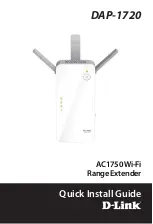
23
MAINTENANCE
GENERAL
Avoid using solvents when cleaning plastic parts. Most
plastics are susceptible to damage from various types of
commercial solvents and may be damaged by their use.
Use clean cloths to remove dirt, carbon dust, etc.
WARNING:
Do not at any time let brake fluids, gasoline, petroleum-
based products, penetrating oils, etc. come in contact
with plastic parts. They contain chemicals that can dam-
age, weaken, or destroy plastic.
Electric tools used on fiberglass material, wallboard,
spackling compounds, or plaster are subject to
accelerated wear and possible premature failure, as the
fiberglass chips and grindings are highly abrasive to
bearings, brushes, commutators, etc. Consequently, we
do not recommended that this tool be used for extended
work on these types of materials. If, however, you do work
with any of these materials, it is extremely important that
you clean the tool frequently by blowing it with an air jet.
WARNING:
Always wear safety goggles or safety glasses with side
shields during power tool operation or when blowing dust.
If operation is dusty, also wear a dust mask.
LUBRICATION
All of the bearings in this tool are lubricated with a
sufficient amount of high grade lubricant for the life of the
unit under normal operating conditions. Therefore, no
further lubrication is required.
WARNING:
When servicing use only identical Ryobi replacement parts. Use of any other parts may create a hazard or cause product
damage.
CUTTERS
Get faster and more accurate cutting results by keeping
cutters clean and sharp. Remove all accumulated pitch
and gum from cutters after each use.
When sharpening cutters, sharpen only the inside of the
cutting edge. Never grind the outside diameter. Be sure
when sharpening the end of a cutter to grind the
clearance angle the same as originally ground.
COLLET
Dust and chips may collect on the collet from time to time,
making it necessary to clean the collet. To do so, remove
the collet assembly and wipe it with a clean dry rag.
Clean the taper in the shaft in the same manner. Never
immerse the collet or end of the shaft in a solvent or in
water. Before replacing the collet assembly, put a drop of
SAE30 motor oil on the inside of the nut, on the threads
of the shaft, and on the taper in the shaft. Replace the
collet assembly onto the shaft by hand only. Never
tighten the collet nut without a bit in the collet. This action
could permanently damage the collet.
ADJUSTING LOCKING ARM TENSION
Over time and with repeated use, the locking arm may
become loose. When this occurs, tighten the elastic stop
nut slightly. The elastic stop nut should be loose enough
so there is some play in the locking arm when it is in the
open position. Make sure the motor housing does not move
up or down when clamped.
NOTE:
Do not over tighten the elastic stop nut. The locking
arm should clamp tightly to secure the motor housing.
If the locking arm becomes worn beyond adjustment, a
repair kit is available. Please contact your service center to
order the appropriate router locking arm repair kit.
ACCESSORIES
The following recommended accessories are included
with the tool.
ACCESSORIES
Template Guide Bushing Kit ............................. 4070177
Straight Guide ................................................... 6090080
WARNING:
The use of attachments or accessories not listed could
be hazardous.


































